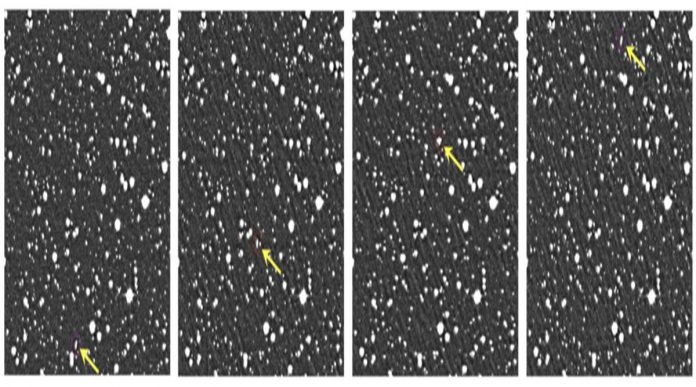Valuable data was gathered by the satellite until 1969 and two years later it was decommissioned. Since then the OGO-1 has been revolving around on a highly elliptical orbit. It takes two days for the satellite to complete its trajectory around our planet.
Late in the evening on Tuesday, August 25, University of Arizona’s Catalina Sky Survey (CSS), funded by NASA’s Planetary Defense Coordination Office (PDCO), observed a very small object that appeared to be on an impact trajectory with Earth. The University of Hawaii’s Asteroid Terrestrial-impact Last Alert System (ATLAS), also funded by PDCO, independently detected the object, and follow-up observations to confirm the object’s orbit were conducted by CSS.
After further precision orbit calculations were conducted by the Center for Near-Earth Object (NEO) Studies (CNEOS)at NASA’s Jet Propulsion Laboratory, and compared with the European Space Agency’s NEO Coordination Center, it was confirmed the object was not an asteroid but in fact an old NASA scientific spacecraft, the Orbiting Geophysics Observatory 1 (OGO-1).
OGO-1 was launched in September of 1964 and was built at NASA’s Goddard Space Flight Center. It was the first of a series of six missions launched, one each year from 1964 to 1969, to better understand our home planet. OGO-1 was launched into an eccentric orbit around Earth that took the spacecraft approximately two days to complete one orbit and allowed the spacecraft to sweep through Earth’s radiation belts to study our planet’s magnetosphere—the region of space surrounding Earth that is controlled by Earth’s magnetic field. OGO-1 operated and returned scientific data for five years until 1969, after which point the spacecraft was placed in standby mode when scientists were unable to return any more data. All support for the mission was terminated in 1971.
While OGO-1 was the first spacecraft to be launched in the OGO series, it will be the last to return home as all other five spacecraft have already decayed from orbit and safely reentered Earth’s atmosphere, landing in various parts of the planet’s oceans. OGO-1 is predicted to reenter on one of its next three perigees, the points in the spacecraft’s orbit closest to our plant, and current estimates have OGO-1 reentering Earth’s atmosphere on Saturday, August 29th, 2020, at about 5:10 pm EDT, over the South Pacific approximately halfway between Tahiti and the Cook Islands. The spacecraft will break up in the atmosphere and poses no threat to our planet—or anyone on it—and this is a normal final operational occurrence for retired spacecraft.
NASA’s Near-Earth Object Observations projects will continue track of this object to confirm its reentry time and location, and to exercise its processes for tracking and predicting impacts of natural objects on Earth’s atmosphere.















